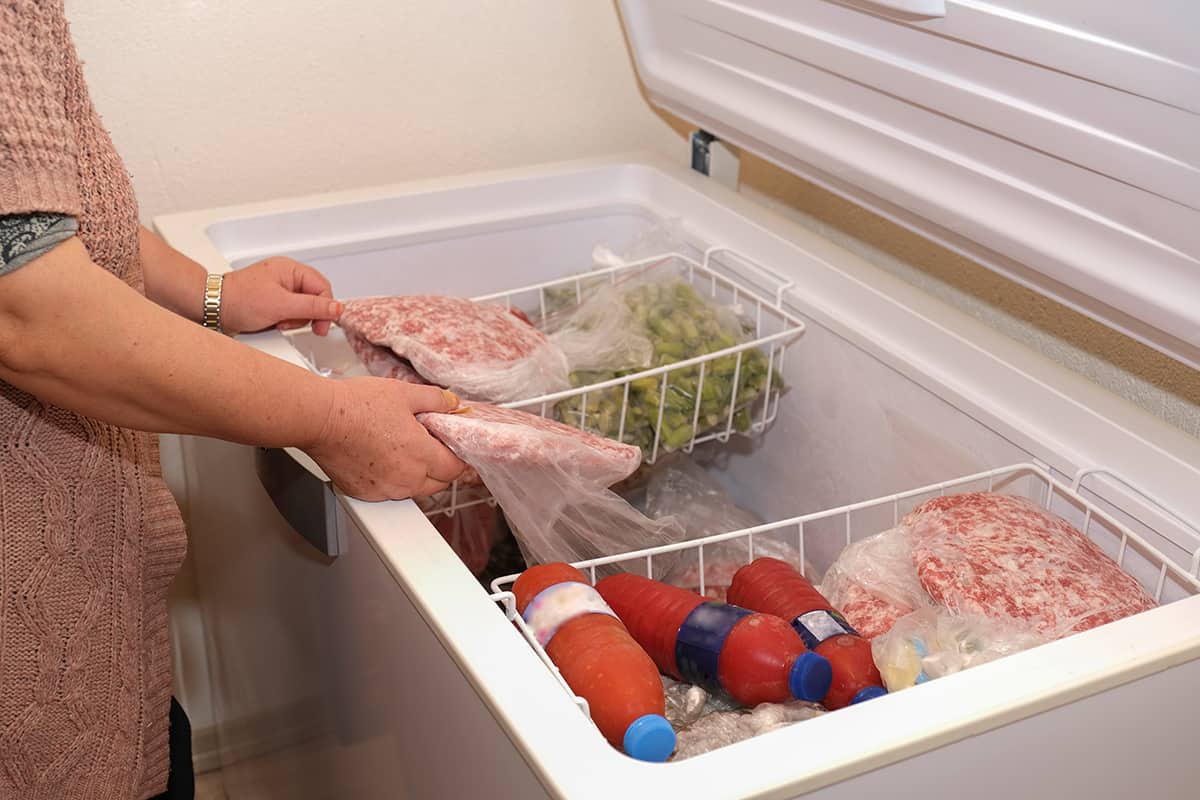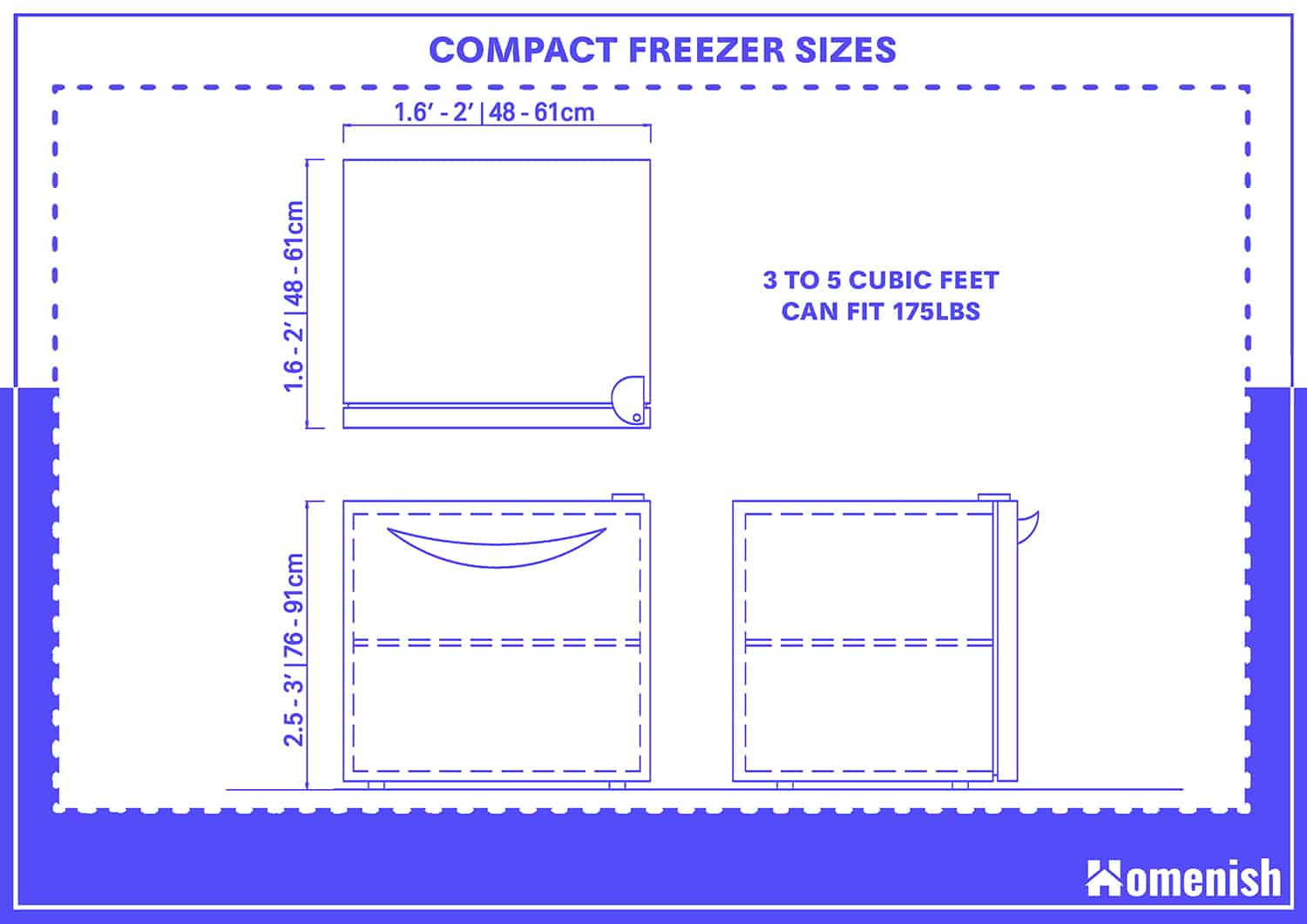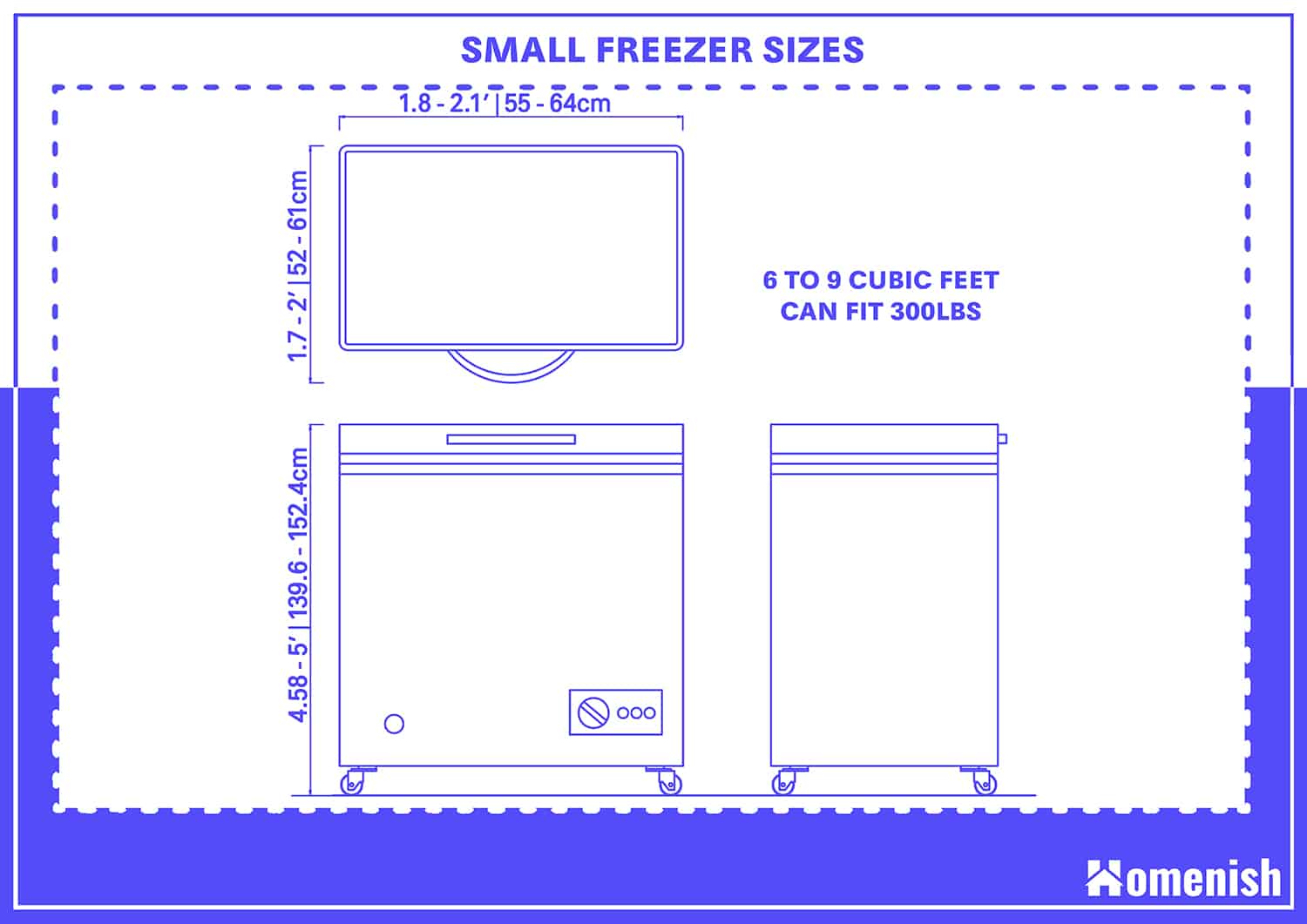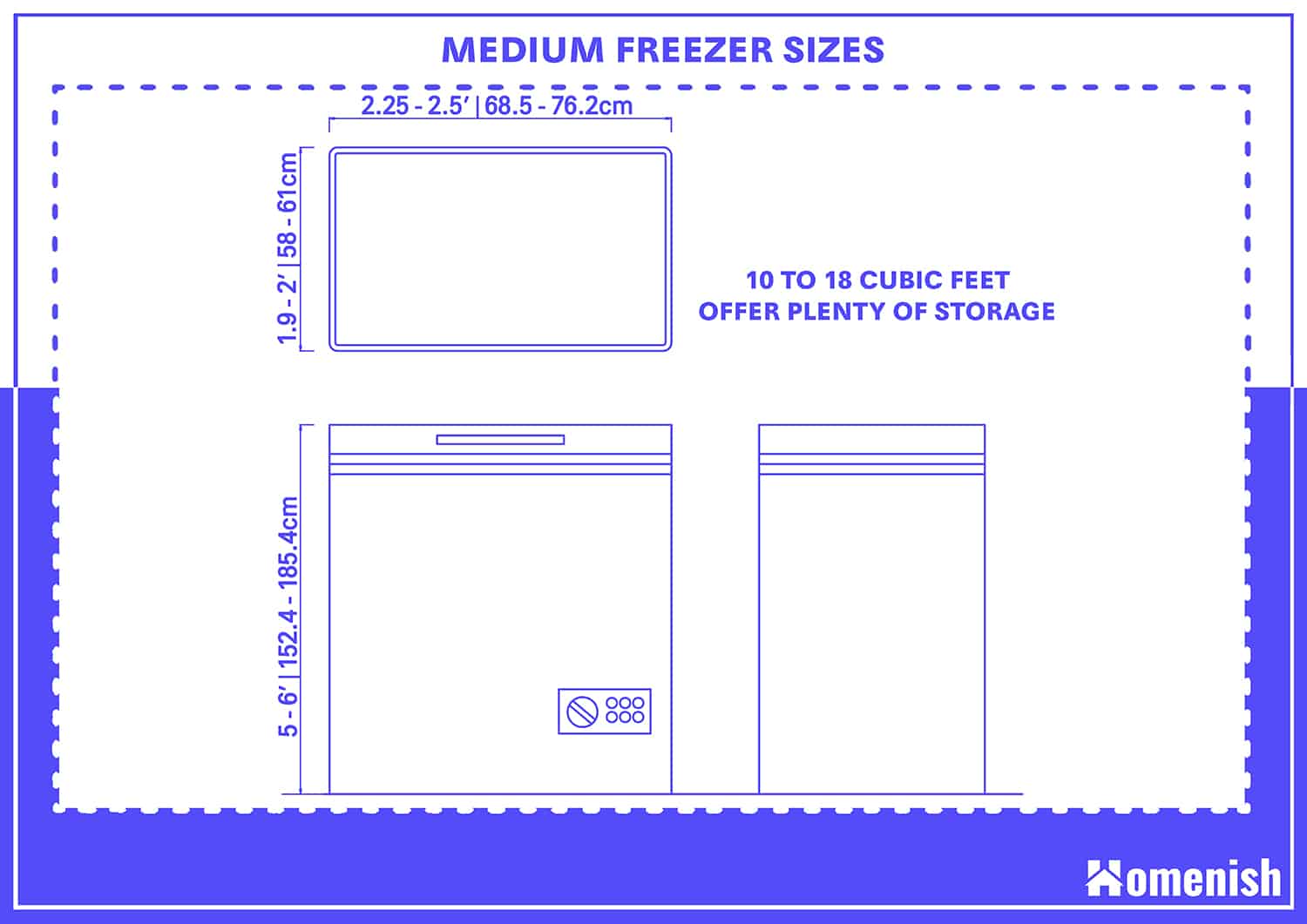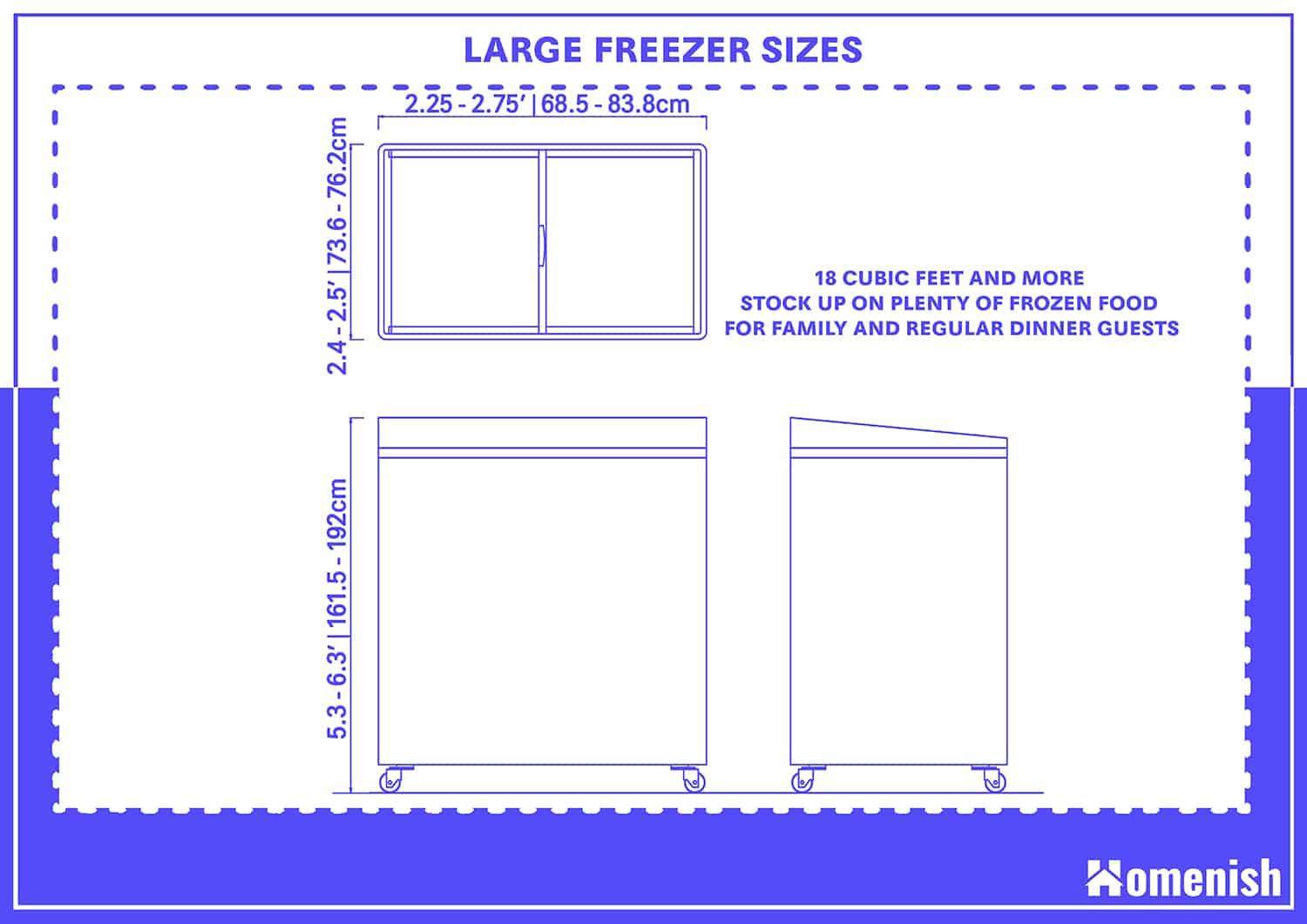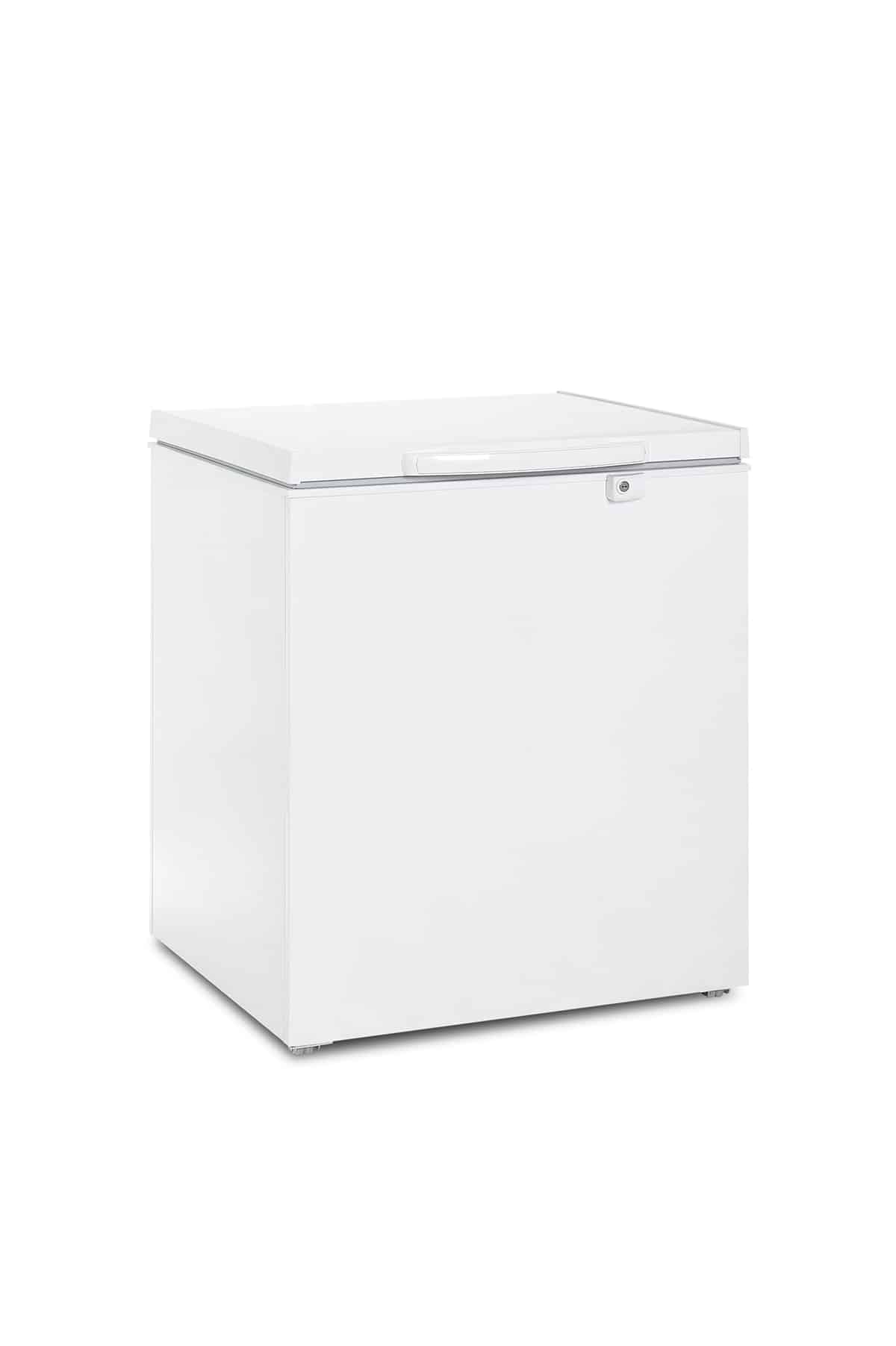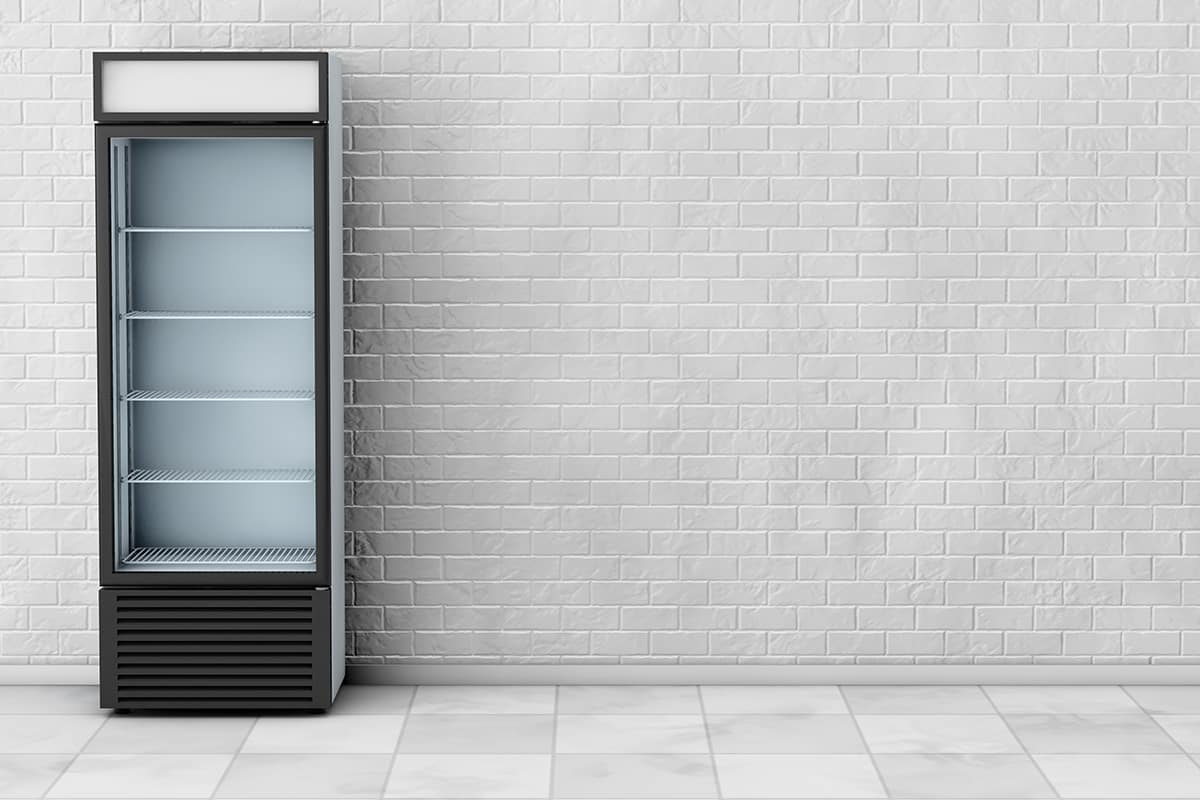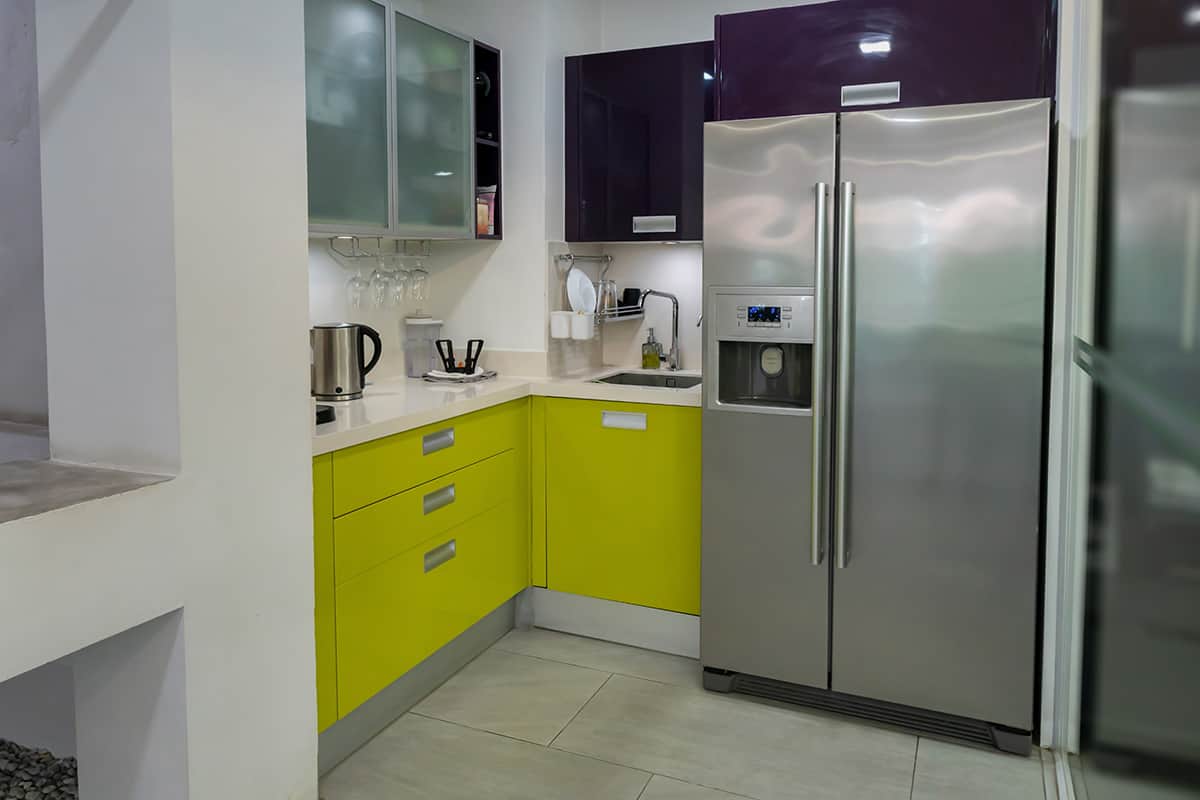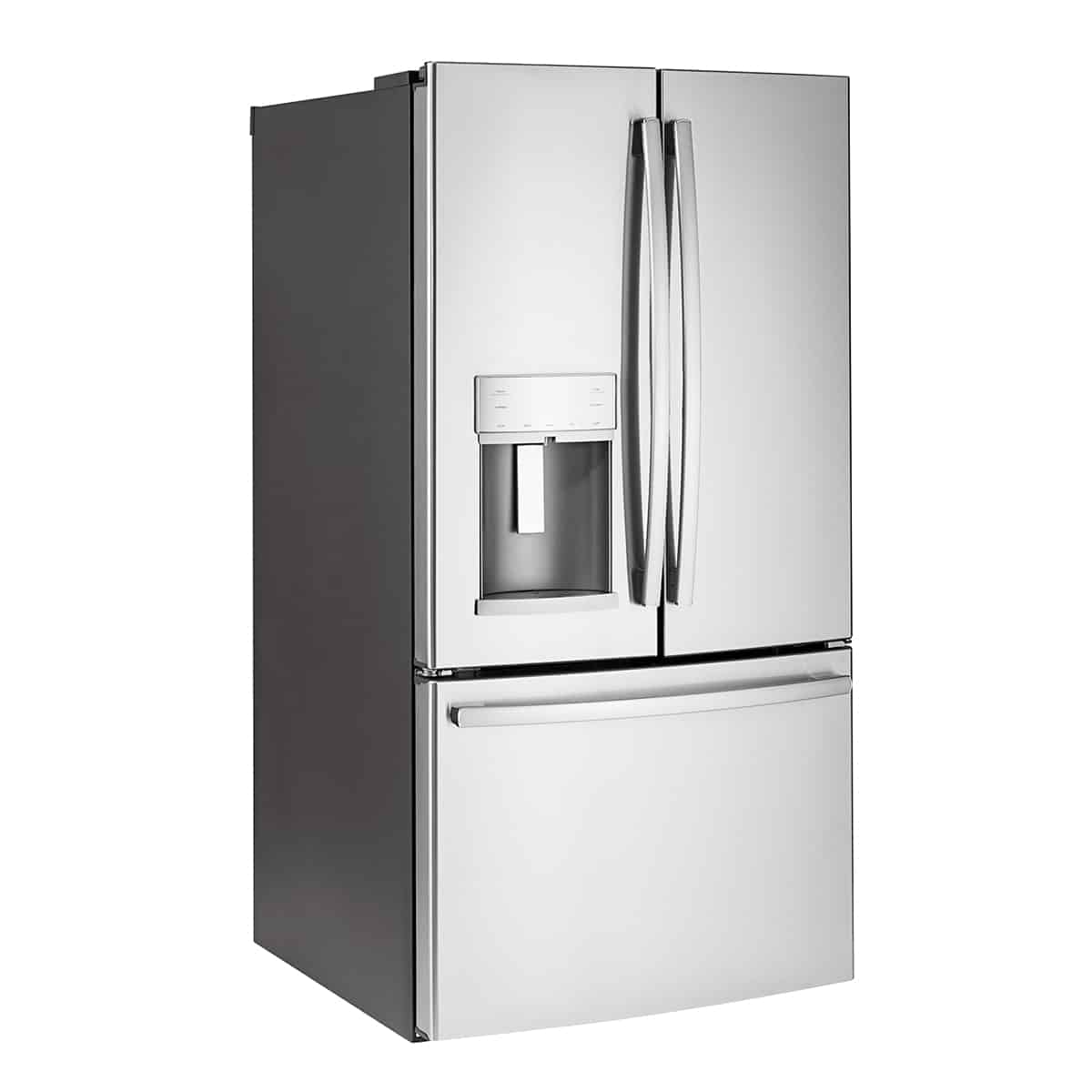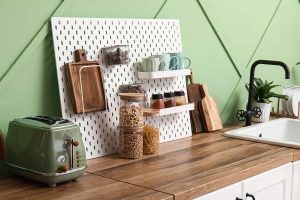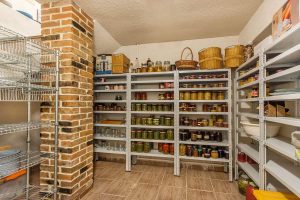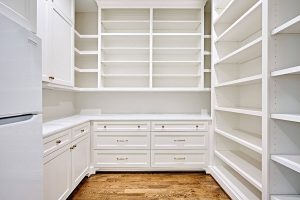Freezers are considered an essential kitchen appliance for most homeowners, and they are used for prolonging the shelf life of food products, as well as storing frozen goods such as ice cream and making ice cubes.
There are many different styles of freezers available, which fit into the various categories set out below.
Here we will look at the most common types of freezers used today and their corresponding sizes.
Freezer Sizes
Freezers are measured in cubic feet, which is a measure of volume. This measurement can be found by multiplying the height, depth, and width of a freezer.
For example, a freezer that is two feet wide, three feet deep, and five feet tall will have the calculated value of 2 x 3 x 5, which equals 30. This tells us that a freezer of this size would hold 30 cubic feet of produce.
Understanding the cubic feet of a freezer is useful to let us know how much food we can store in it; however, this measurement is less helpful when trying to figure out if the freezer will fit into your space.
For this, the height, width, and depth measurements are more useful. Most freezers will fit into one of the following size categories.
Compact
Compact freezers will have a measurement of between three and five cubic feet. At a maximum, this size of freezer will fit 175 lbs of food in it.
These freezers aren’t very useful as a primary freezer unless you live alone and don’t freeze many food items, but they can be good for extra storage on top of your regular freezer.
They are particularly useful during events such as birthdays or Thanksgiving to store overflow food when you will be having guests over and therefore need to store a higher volume of food than usual.
Small
A small freezer will measure between six and nine cubic feet. These freezers are well suited to small families who don’t eat much frozen food, or single people. They can hold up to 300 lbs of food.
Medium
Medium-sized freezers will measure between ten and 18 cubic feet. These are a great size for most single-family homes, offering plenty of storage space for frozen food as well as meals you have made in advance and freeze for use at a later date.
Large
A large freezer will measure 18 cubic feet or more. Large kitchens can really benefit from a freezer of this size if you like to do large grocery shops and stock up on plenty of frozen food to feed a big family or regular dinner guests.
Bear in mind that larger freezers obviously occupy more space in a room, and they will also generally use more electricity compared with smaller freezers and therefore be more costly to run.
Types of Freezers
Chest Freezers
A chest freezer is exactly as you would imagine from the name. These are typically rectangular shaped though smaller versions can be cube-shaped, and they will have a lid on the uppermost surface, which works on hinges to open like a chest.
These are great for keeping in the garage or basement because they hold a lot of food, but they aren’t popularly used in kitchens because the lid element means they restrict a countertop from being fitted over the top, which can make for a poor use of space in a kitchen. Chest freezers can range in size from compact to large.
Upright Freezers
Upright freezers are much more commonly used in kitchens compared with chest freezers because they offer a good use of space.
These are free-standing freezers that can be low in height to fit under a countertop, or they can be tall to offer a good amount of vertical food storage.
Upright freezers will usually have one or two doors on the front which open out like cupboards, and then inside, they may have shelves or drawers for storage. Upright freezers can range in size from compact to large.
Drawer Freezers
Drawer freezers can be free-standing, or they can be integrated into a kitchen with doors that match the kitchen cabinet doors, making them look like regular drawers.
These are great for easy access because they can be pulled out quickly to get to your frozen groceries under the countertops. Drawer freezers are rarely any taller than the average kitchen countertop, so these types of freezers usually fit into the compact to medium size range.
Side by Side Freezer Refrigerator Combos
A very popular style of freezer in modern homes is the side-by-side freezer and refrigerator combo. In this type of freezer, two tall vertical doors open outwards like a cupboard or closet. The refrigerator section is generally on the right side, and the freezer is on the left, but this isn’t always the case.
Sometimes the refrigerator section will be wider than the freezer section and therefore will hold more food, or in some side-by-side freezer and refrigerator combos, each section will be exactly the same size to give it a more symmetrical and uniform look from the outside.
These types of freezers are usually medium to large in size.
Bottom Freezer Refrigerators
Bottom freezer refrigerators are an alternative version to the side-by-side combos. These are one single appliance that has the dual function of storing frozen and refrigerated goods in two separate sections.
The refrigerator section will be in the upper half of the appliance, and the freezer will be lower down. This makes the most practical sense because most people access the freezer much less frequently compared to the refrigerator throughout the day, so having the freezer lower down means the user won’t have to bend down as often, and the items in the refrigerator are easier to access.
A bottom freezer may open with drawers or with a door to reveal drawers or shelves. Bottom freezers themselves are generally compact or medium-sized, but when considered as a whole appliance along with the upper fridge, these freezers are large in size.
